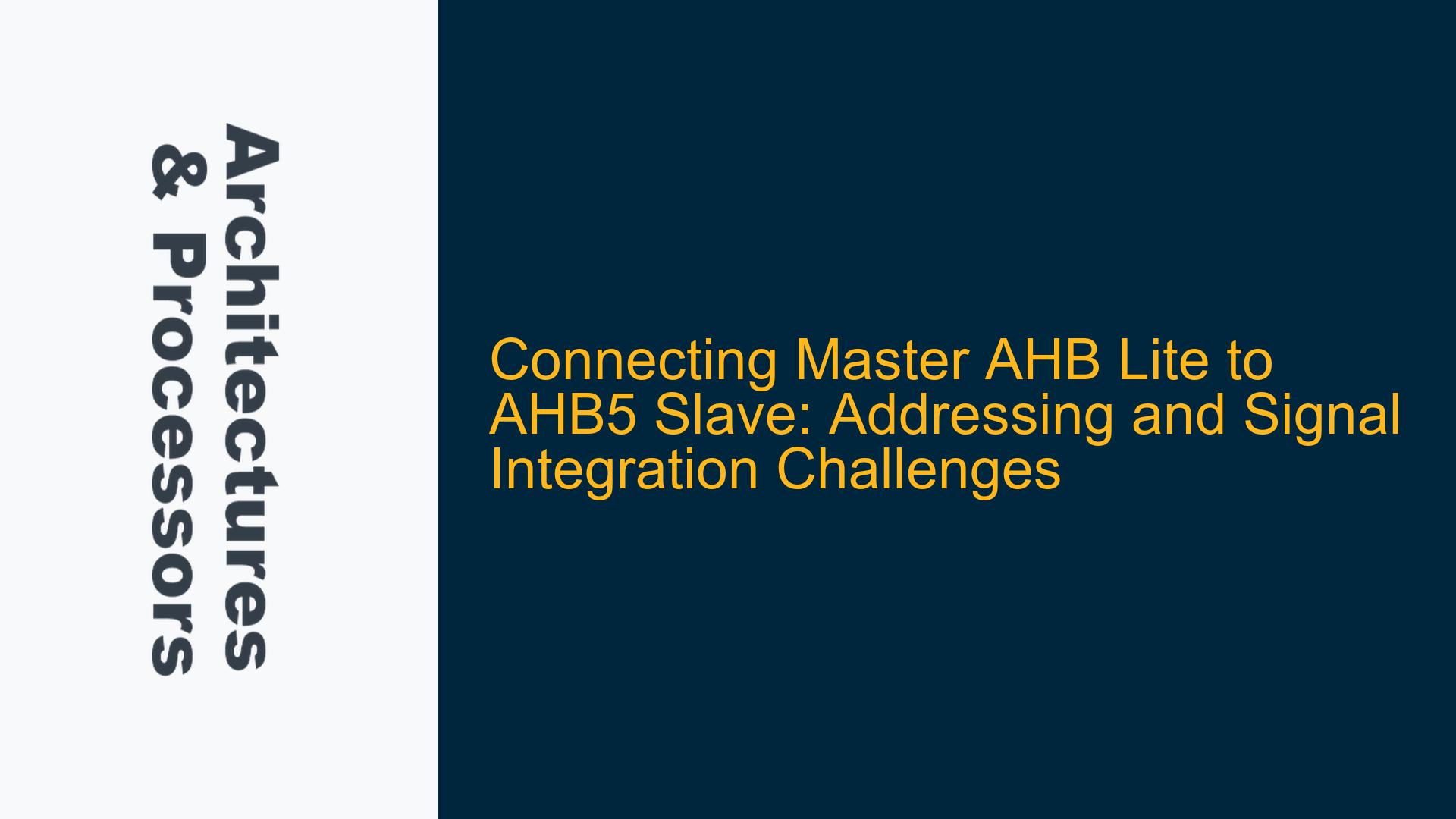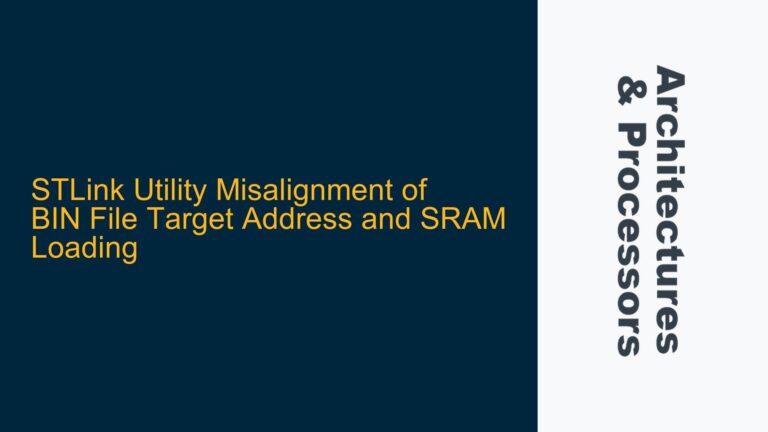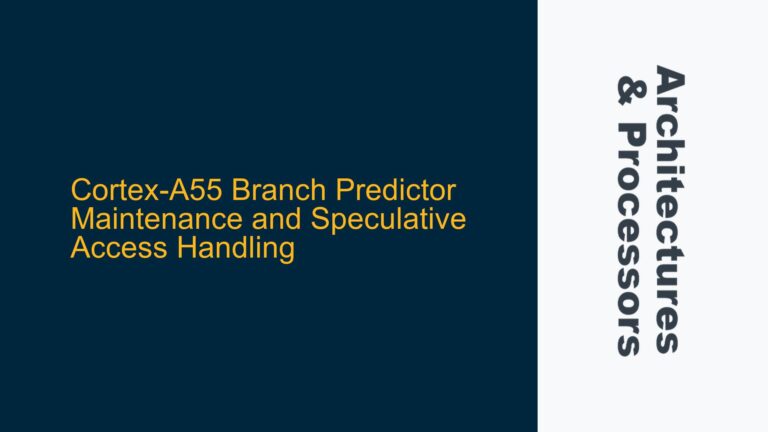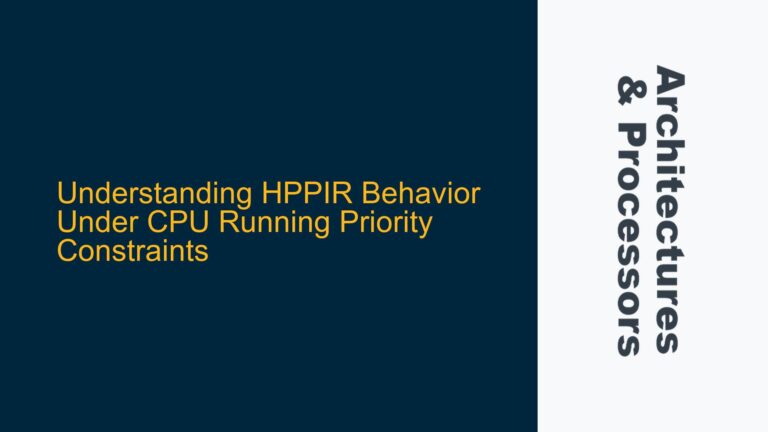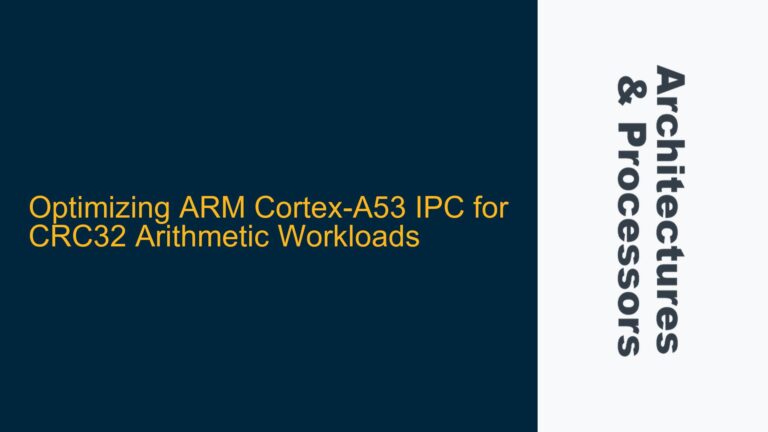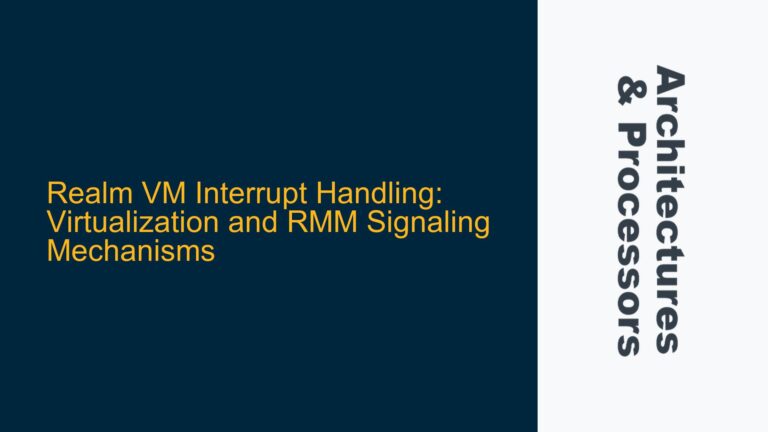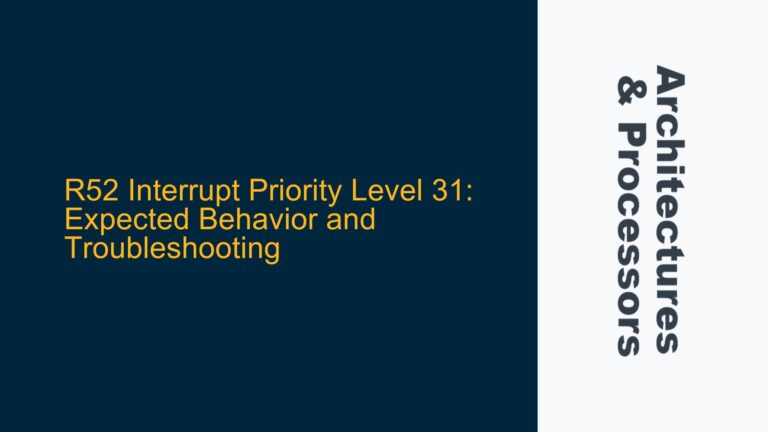Master AHB Lite to AHB5 Slave Connectivity and Addressing Misalignment
The core issue revolves around the integration of a Master AHB Lite interface with an AHB5 Slave, specifically when attempting to bridge AHB5 to AXI5 for FPGA testing. The primary challenge lies in the misalignment of address spaces between the MicroBlaze processor and the AHB5_AXI5 bridge, which prevents the MicroBlaze from effectively sending read/write transactions through the bridge. Additionally, there are residual signals in the AHB5 and AXI5 protocols that are not present in AHB Lite and AXI4, respectively, leading to potential integration issues. The AHB5_AXI5 bridge, in this case, is not correctly mapped into the address space of the MicroBlaze, causing a disconnect in the data flow.
The AHB5 protocol introduces several new signals and features compared to AHB Lite, such as security attributes (HNONSEC), exclusive transfers (HEXCL), and sideband signals (HQOS, HREGION, HNSAID). These signals are not supported in AHB Lite, and their presence in AHB5 requires careful handling during integration. Similarly, AXI5 introduces features like QoS, regions, and secure access IDs, which are not supported in AXI4. When bridging AHB5 to AXI5 and then connecting to an AXI4 BRAM controller, these unsupported signals must be properly tied off or ignored to ensure correct functionality.
The addressing misalignment issue arises because the AHB5_AXI5 bridge is not correctly integrated into the MicroBlaze’s memory map. This prevents the MicroBlaze from accessing the bridge and, consequently, the AXI4 BRAM controller. The root cause of this issue is likely a misconfiguration in the address decoding logic or the memory map setup in the MicroBlaze platform.
Residual Signal Handling and Protocol Mismatch in AHB5 and AXI5
The integration of AHB Lite with AHB5 and AXI5 with AXI4 introduces several residual signals that must be carefully managed. In AHB5, signals such as HNONSEC, HEXCL, HMASTER, HQOS, HREGION, and HNSAID are not present in AHB Lite. Similarly, AXI5 introduces signals like AWQOS, AWREGION, and AWNSAID, which are not supported in AXI4. These signals must be tied off or ignored to ensure proper functionality.
For the AHB5 to AXI5 bridge, the HNONSEC signal can be tied high (1’b1) to ensure that all transactions are treated as non-secure, as AHB Lite does not support security attributes. The HEXCL signal, which indicates exclusive transfers, can be tied low (1’b0) since AHB Lite does not support exclusive transfers. The HMASTER signal, which identifies the master initiating an exclusive transfer, can be tied to a static value since it is unused in this context. The HEXOKAY signal, which indicates the success of an exclusive transfer, can be left unconnected.
The sideband signals HQOS, HREGION, and HNSAID in AHB5 are not part of the AHB5 protocol but are instead address-phase timed signals that are passed through the AHB5_AXI5 bridge to the AXI5 interface. Since these signals are not supported in AXI4, they can be tied to 4’b0000 to ensure they are ignored by the AXI4 BRAM controller.
In the AXI5 to AXI4 bridge, the AWQOS, AWREGION, and AWNSAID signals must also be tied off or ignored. These signals are used in AXI5 for QoS, region identification, and secure access, respectively, but are not supported in AXI4. Tying these signals to default values ensures that they do not interfere with the AXI4 BRAM controller’s operation.
Correcting Address Mapping and Signal Integration for Functional Connectivity
To resolve the addressing misalignment and ensure proper signal integration, the following steps should be taken:
-
Address Mapping Configuration: The address space of the AHB5_AXI5 bridge must be correctly mapped into the MicroBlaze’s memory map. This involves configuring the address decoding logic in the MicroBlaze platform to include the address range of the AHB5_AXI5 bridge. The address range should be defined in the MicroBlaze’s memory map configuration, ensuring that the MicroBlaze can access the bridge and, consequently, the AXI4 BRAM controller.
-
Residual Signal Handling: The residual signals in the AHB5 and AXI5 protocols must be properly tied off or ignored. For the AHB5 interface, the HNONSEC signal should be tied high (1’b1), the HEXCL signal should be tied low (1’b0), and the HMASTER signal should be tied to a static value. The HEXOKAY signal can be left unconnected. The sideband signals HQOS, HREGION, and HNSAID should be tied to 4’b0000. For the AXI5 interface, the AWQOS, AWREGION, and AWNSAID signals should be tied to default values to ensure they are ignored by the AXI4 BRAM controller.
-
Verification of Signal Connectivity: After configuring the address mapping and tying off the residual signals, the connectivity between the MicroBlaze, AHB5_AXI5 bridge, and AXI4 BRAM controller should be verified. This can be done using simulation or FPGA debugging tools to ensure that the MicroBlaze can successfully send read/write transactions through the bridge to the BRAM controller. The simulation should include test cases that cover various address ranges and transaction types to ensure full coverage.
-
Debugging and Validation: If the connectivity issues persist, further debugging may be required. This could involve checking the timing of the signals, ensuring that the address decoding logic is correctly implemented, and verifying that the residual signals are properly tied off. Additionally, the MicroBlaze platform’s configuration should be reviewed to ensure that it is correctly set up to support the AHB5_AXI5 bridge and AXI4 BRAM controller.
By following these steps, the integration of the Master AHB Lite interface with the AHB5 Slave can be successfully achieved, allowing the MicroBlaze to send read/write transactions through the AHB5_AXI5 bridge to the AXI4 BRAM controller. Proper handling of the residual signals and correct address mapping are critical to ensuring the functionality of the system.
